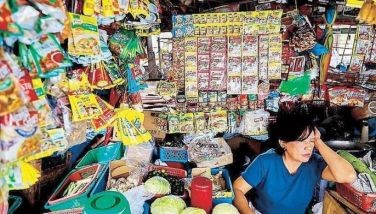Gearing up for a more robust hospitality industry?

Vietnam and Thailand continue to bring in the tourists, as official tourism records show. In the ASEAN region, these two countries are the only ones that have registered an increase in hotel occupancy in 2015. Manila registered a lower occupancy rate, down by 68 percent from January to June or 1.68 percentage points. Singapore showed a 2.1 percentage points decline while Bali showed a more dismal 8.6 percentage points decline. What is surprising is the fact that Chinese tourists overtook the Japanese travellers to the Philippines, this despite the advisory from the Chinese government warning their citizens against travelling to our country in the light of the on-going territorial dispute.
Yet, in spite of the lower hotel occupancy rate, developers have firmed up their expansion plans to put up more hotels and resorts in the country. Filinvest through their company Chroma Hospitality (previously named Filarchipelago Hospitality) has big developments in the pipeline in Alabang and Cebu where they will increase their rooms from the current 1,063 to 5,000 room by 2020. The company will also be spending P2.6 billion for a 228-room Canvas Hotel in Cubao and a 185-room /Serulyan Condotel in Mactan, both of which will open between 2018-2019.
Ayala Land will also expand the Seda brand throughout the country. Ayala’s Vision 2020 has a portfolio of 6,000 hotel and resort keys in the next five years.
Robinson’s Land will not be left behind. They will expand their budget Go Hotel brand from its present nine locations.
Rockwell Land will also expand their Aruga brand of hotel-serviced apartments.
Planet Hotel has plans to build twenty hotels within the next five years.
Everjust Realty Development Corp., a Cebu-based company is entering into a joint venture with Japanese hotel chain Toyoko Inn to open a 583-room business hotel in Mandaue City, Cebu by 2017, and build three more Azalea Hotels and residences in Cebu, Davao and Clark.
The optimistic business outlook here at home is at an all-time high – I hope it translates to more foreign and domestic tourists to occupy all these rooms.
* * *
Many people were surprised to read in the dailies that the Philippines is now a founding member of the Beijing-led Asian Infrastructure Investment Bank (AIIB) a couple of weeks ago. It appeared that President Aquino waited until the last minute to sign up with the AIIB to beat the deadline of Dec. 31, 2015. But not too many understand what this membership in this lender bank exactly means to us.
The Philippines has to pay $196 million to be paid in five years representing its share in the paid-up capital of the bank. That is $39 million annually for the next five years.
Finance Secretary Cesar Purisima, however, believes that the Asian Infrastructure Investment Bank will serve to spur more growth in the region. It will pose serious competition to the Japan-led Asian Development Bank and perhaps even the World Bank. He also believes that the bank will be run like a multilateral institution, so our investments should be safe.
The Philippines will most probably be one of the first in line to avail of this lender-bank’s services. According to the estimates of the Asian Development Bank, our infrastructure financing needs from 2010 to 2020 will reach the staggering amount of $127.12 billion, or $11.56 billion a year. Between our share in the paid-up capital and our amortizations for the loan we will incur for these infrastructure needs, can we really cope?
By this time, our official representatives will already be in Beijing for the official signing which was scheduled for the third week of January 2016. The President has named Finance Secretary Cesar Purisima to sign the articles of agreement in behalf of the Philippines together with Philippine Ambassador to China, H.E. Erlina F. Basilio. All founding members have until the end of 2016 to complete the domestic ratification and other processes. We also have until the end of the year to come up with the initial payment of the corresponding paid-up capital as a founding member.
* * *
The Food and Drug Administration (FDA) was recently taken out of the government’s budget allocation under the General Appropriations Act because the agency is deemed to be fiscally sustainable, hence allocation is no longer needed. Because of this and in order to sustain itself, however, the FDA is proposing to increase its regulatory fees and other charges, and the stakeholders directly affected by this are up in arms.
Two big organizations have submitted their position papers against this move of the FDA: the Philippine Exporters Confederation (PhilExport) and the public-private Export Development Council.
Mr. Sergio Ortiz-Luis, the long-serving president of PhilExport decried this move of the food and drug agency, which only exacerbates the difficulties of our Philippine exporters who have been struggling with the continuing decline in the global market of goods and services for several years now. For the fifth straight year, this sector has not registered a growth, struggling to keep the negative growth in single digits to keep afloat. “Businessmen affected by this proposed increase have no way to recover the additional fees of the FDA but to pass them on to consumers”, added Mr. Ortiz-Luis.
The Export Development Council, for its part, says in its position paper that this compounds the decline in competitiveness of Philippine export. It is detrimental to the Philippine business environment and will only serve to discourage foreign investors. It would also mean significant employment losses for our MSMEs who can hardly keep their costs down.
* * *
The Philippine Rural Development Project (PRDP), a 6-year national program that is supposed to run till 2018, is running out of funds and the Department of Agriculture (DA) is afraid that the full implementation will be postponed. Initial funding of this World Bank -backed project was a staggering $500 million. Now only on its third year, funds will run out by 2017 and DA Secretary Proceso Alcala says they need additional funding of $450 million from World Bank to see the PDRC through.
In fairness to the DA, the World Bank has hailed the PDRC for its fast implementation. The latest disbursement on record with the DA for the PDRP was the P208 million farm-to-market road and other agri support for the Caraga region for the abaca, Kitcharao and rubber industries. Last November, over P1.3 billion worth of projects was also awarded to Northern Mindanao. Thus far, PDRP has allocated a total budget of P12 billion to fund bridges, potable water system and production and marketing support. Of this amount, P10.96 billion went to infrastructure and P1.62 billion for the agri-fishery sector. The DA is still awaiting the go-signal of the World Bank for the additional funding.
Mabuhay!!! Be proud to be a Filipino.
(email) [email protected]. / [email protected]. (website) www.businessandleisure.ph
- Latest
- Trending































